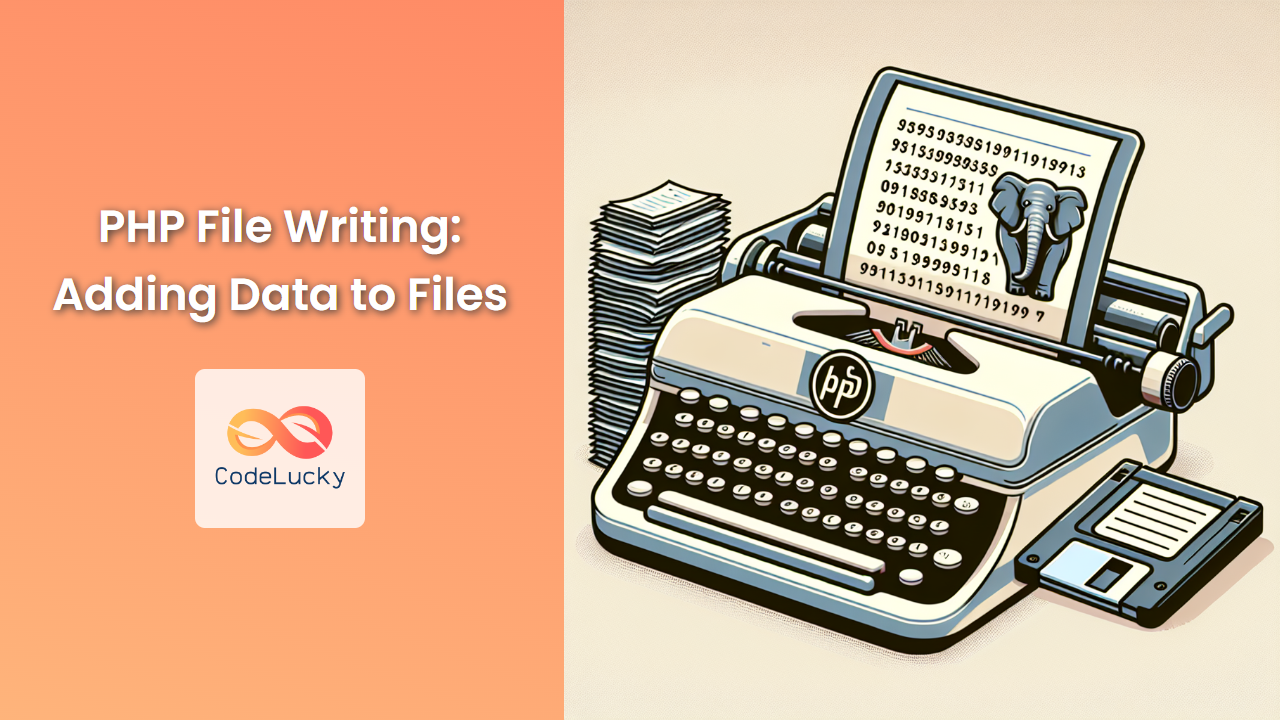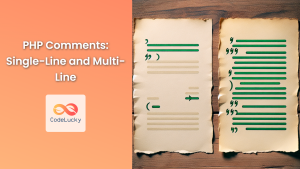In the world of web development, manipulating files is a crucial skill. PHP, being a server-side scripting language, offers powerful tools for file handling. One of the most common operations is writing data to files. Whether you’re creating log files, storing user data, or generating reports, understanding how to write to files in PHP is essential. Let’s dive deep into the art of PHP file writing! 🖋️📄
Understanding File Writing in PHP
Before we start adding data to files, it’s important to understand the basics of file writing in PHP. The process typically involves three steps:
- Opening the file
- Writing data to the file
- Closing the file
PHP provides several functions to accomplish these tasks. Let’s explore them one by one.
Opening a File for Writing
To open a file for writing in PHP, we use the fopen() function. This function takes two parameters: the filename and the mode in which to open the file.
$file = fopen("example.txt", "w");
In this example, we’re opening a file named “example.txt” in write mode (“w”). If the file doesn’t exist, PHP will create it. If it does exist, PHP will erase its contents.
⚠️ Important: The “w” mode overwrites existing content. If you want to append data instead, use “a” mode.
Writing Data to a File
Once we have opened a file, we can write data to it using various PHP functions. Let’s explore some of them:
1. fwrite()
The fwrite() function is the most commonly used method for writing to a file. It takes two parameters: the file resource and the string to write.
$file = fopen("greetings.txt", "w");
fwrite($file, "Hello, World!");
fclose($file);
This script creates a file named “greetings.txt” and writes “Hello, World!” to it.
2. fputs()
fputs() is an alias of fwrite(). It works exactly the same way:
$file = fopen("fruits.txt", "w");
fputs($file, "Apple\nBanana\nCherry");
fclose($file);
This creates a file named “fruits.txt” with three fruits listed on separate lines.
3. file_put_contents()
For simple write operations, file_put_contents() is a convenient function that combines opening, writing, and closing a file in one step:
file_put_contents("colors.txt", "Red\nGreen\nBlue");
This creates a file named “colors.txt” with three colors listed on separate lines.
Appending Data to a File
Sometimes, you want to add data to an existing file without overwriting its contents. For this, we use the append mode (“a”) when opening the file:
$file = fopen("log.txt", "a");
fwrite($file, date("Y-m-d H:i:s") . " - Log entry\n");
fclose($file);
This script opens “log.txt” in append mode, adds a timestamp and a log message, then closes the file. Each time you run this script, it will add a new line to the file.
Writing Arrays to Files
Often, you’ll need to write array data to a file. Let’s look at a few ways to do this:
1. Writing a Simple Array
$fruits = ['Apple', 'Banana', 'Cherry', 'Date'];
$file = fopen("fruits_list.txt", "w");
foreach ($fruits as $fruit) {
fwrite($file, $fruit . "\n");
}
fclose($file);
This script writes each fruit from the array to a new line in “fruits_list.txt”.
2. Writing a Multidimensional Array
For more complex data structures, you might want to use JSON encoding:
$users = [
['name' => 'John Doe', 'email' => '[email protected]'],
['name' => 'Jane Smith', 'email' => '[email protected]']
];
$json_data = json_encode($users, JSON_PRETTY_PRINT);
file_put_contents("users.json", $json_data);
This creates a JSON file named “users.json” with the following content:
[
{
"name": "John Doe",
"email": "[email protected]"
},
{
"name": "Jane Smith",
"email": "[email protected]"
}
]
Error Handling in File Writing
When working with files, it’s crucial to handle potential errors. Here’s an example of how to do this:
$filename = "important_data.txt";
$data = "This is important information.";
try {
$file = fopen($filename, "w");
if ($file === false) {
throw new Exception("Unable to open file!");
}
$write_result = fwrite($file, $data);
if ($write_result === false) {
throw new Exception("Unable to write to file!");
}
fclose($file);
echo "Data written successfully!";
} catch (Exception $e) {
echo "An error occurred: " . $e->getMessage();
}
This script attempts to write data to a file, handling potential errors along the way. If any operation fails, it throws an exception with a descriptive message.
Best Practices for File Writing in PHP
To ensure your file writing operations are efficient and secure, consider these best practices:
-
Always close your files: Use
fclose()after you’re done writing to free up system resources. -
Use appropriate file permissions: Ensure the web server has write permissions for the directory you’re writing to.
-
Validate user input: If you’re writing user-supplied data to a file, sanitize it first to prevent security vulnerabilities.
-
Use absolute paths: When possible, use absolute file paths to avoid confusion about file locations.
-
Handle errors gracefully: Always check for potential errors and handle them appropriately.
-
Use file locking for concurrent access: If multiple scripts might access the same file simultaneously, use
flock()to prevent data corruption.
Practical Example: Creating a Simple Logging System
Let’s put our knowledge into practice by creating a simple logging system:
function log_message($message, $level = 'INFO') {
$log_file = __DIR__ . '/application.log';
$timestamp = date('Y-m-d H:i:s');
$log_entry = "[$timestamp] [$level] $message\n";
if (file_put_contents($log_file, $log_entry, FILE_APPEND) === false) {
error_log("Failed to write to log file: $log_file");
return false;
}
return true;
}
// Usage
log_message("User logged in successfully", "INFO");
log_message("Database connection failed", "ERROR");
This script defines a log_message() function that writes timestamped log entries to an “application.log” file. It uses FILE_APPEND to add new entries without overwriting existing ones.
After running this script, your “application.log” file might look like this:
[2023-06-15 14:30:22] [INFO] User logged in successfully
[2023-06-15 14:30:22] [ERROR] Database connection failed
Conclusion
File writing is a powerful feature in PHP that opens up a world of possibilities for data storage and manipulation. Whether you’re creating log files, saving user data, or generating reports, the ability to write to files is an essential skill for any PHP developer.
Remember to always handle files with care, considering security implications and following best practices. With the knowledge you’ve gained from this article, you’re well-equipped to tackle file writing tasks in your PHP projects. Happy coding! 💻🚀



















